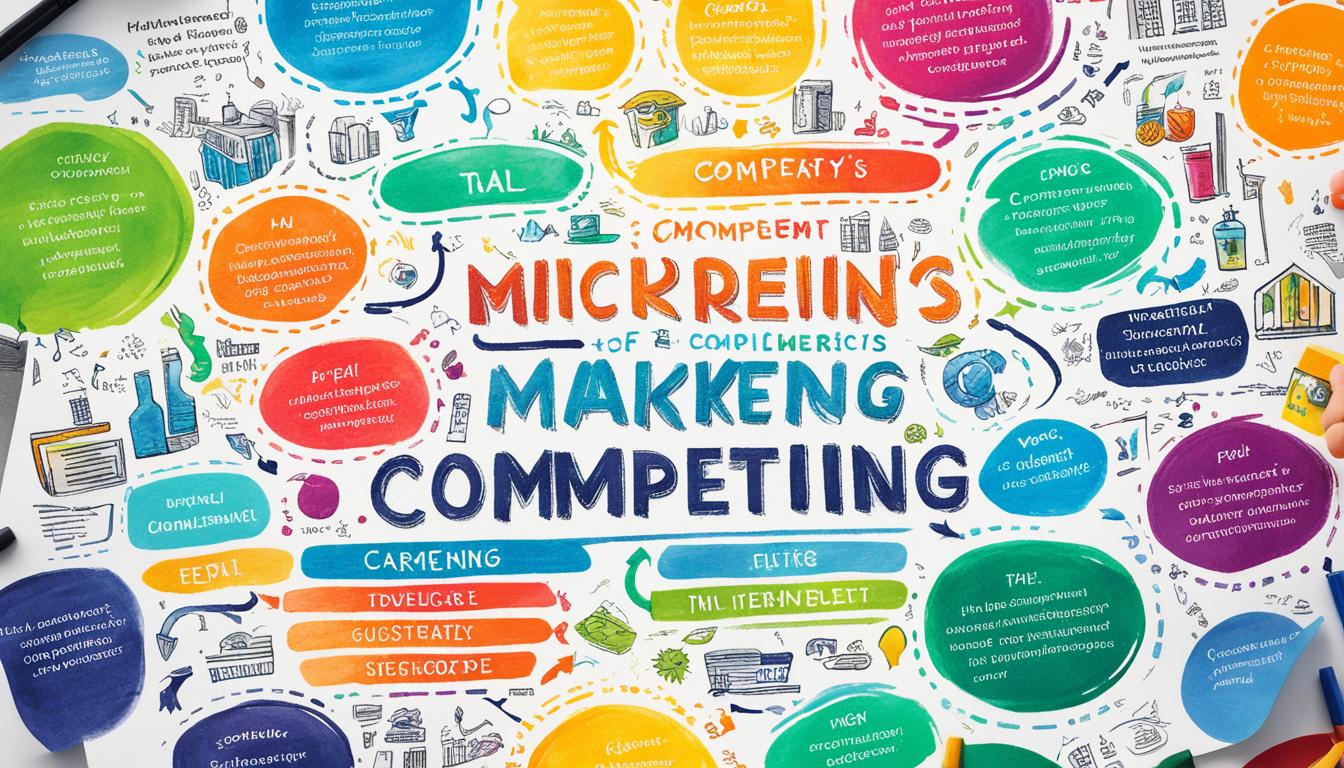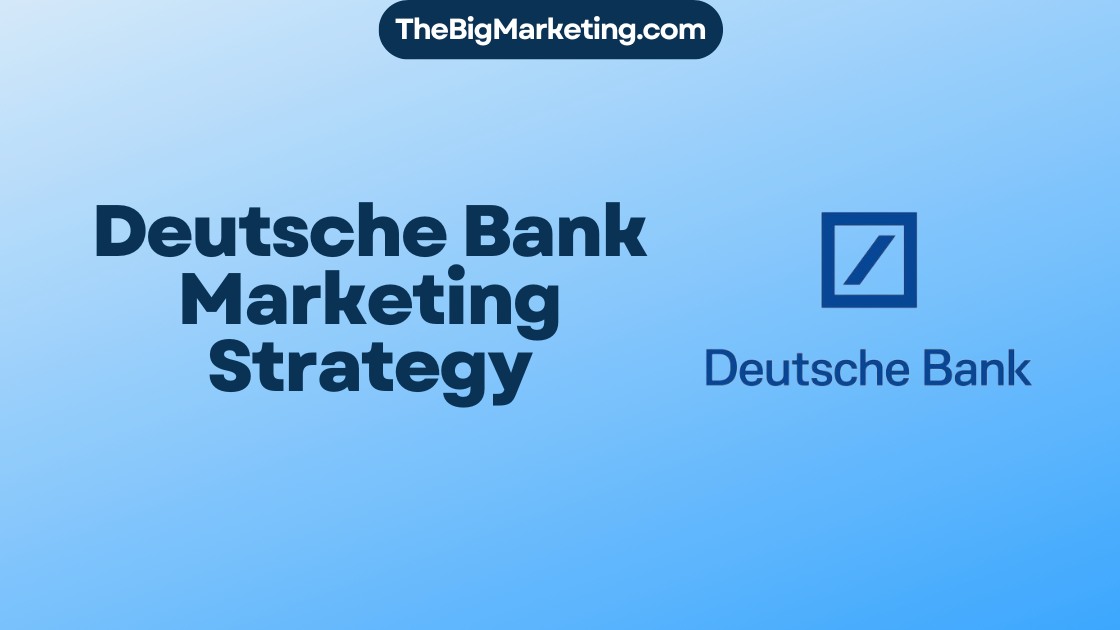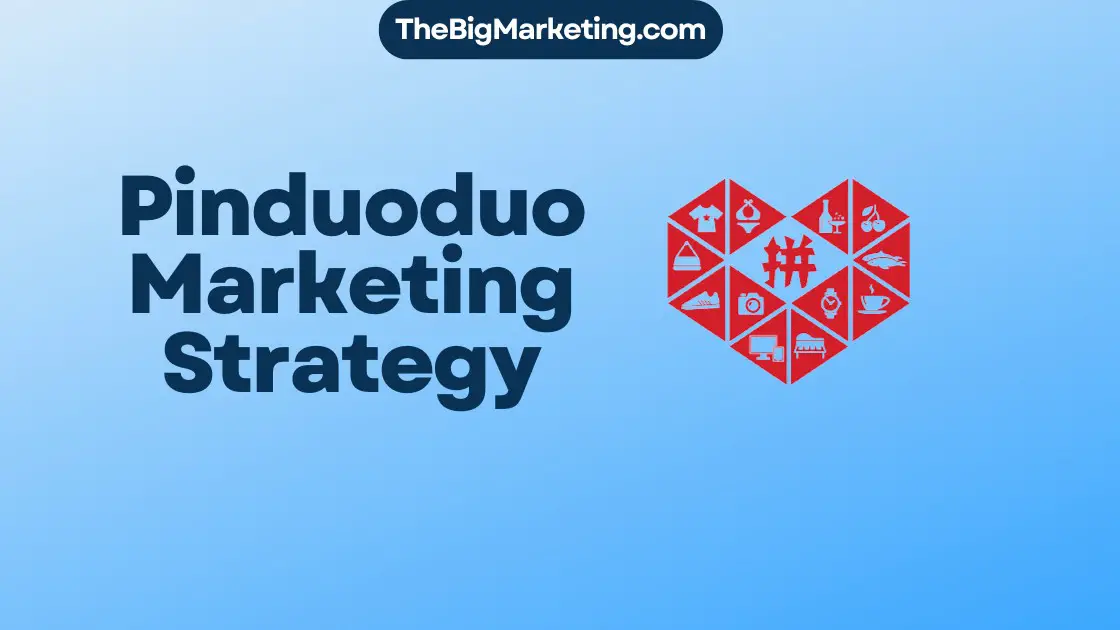Legoland, the renowned brand in the toy industry, has devised a marketing strategy that truly captivates the imagination. By implementing a combination of innovative marketing campaigns, branding initiatives, and digital advertising efforts, Legoland has successfully garnered the attention of families worldwide. With a focus on creativity and play, Legoland entices its target audience into a world of endless possibilities.
Key Takeaways:
- Legoland has developed a comprehensive marketing strategy that encompasses various tactics and initiatives.
- The brand emphasizes creativity and play in its marketing campaigns, appealing to families and Lego enthusiasts.
- Legoland leverages digital advertising to reach its target audience effectively through social media and other platforms.
- Strategic partnerships with popular brands and franchises enhance Legoland’s marketing efforts and expand its reach.
- Market research plays a crucial role in shaping Legoland’s marketing strategy and understanding its target audience better.
Understanding the Legoland Brand
Legoland has positioned itself as a dominant force in the toy industry, constantly innovating and revamping its products to meet the evolving demands of its customers. Through extensive market research and analysis, Legoland has gained valuable insights into its target audience and has crafted its branding initiatives accordingly, appealing to both children and adults. By understanding the unique needs and preferences of their consumers, Legoland has successfully created a robust brand identity that resonates with its customers.
Legoland’s branding initiatives are designed to captivate and engage their target audience, showcasing the creativity and endless possibilities of the Lego world. By aligning their brand with the imaginative and playful nature of Lego, Legoland has established itself as a trusted and beloved name in the toy industry.
Target Audience Analysis
Through meticulous market research and analysis, Legoland has identified its target audience and their specific preferences and behaviors. With a focus on both children and adults, Legoland understands that it needs to appeal to the desires and aspirations of its customers at all stages of life.
For children, Legoland provides a world of imagination and creativity, allowing them to bring their dreams to life. Through interactive experiences, themed attractions, and engaging marketing campaigns, Legoland captures the hearts and minds of young Lego enthusiasts.
At the same time, Legoland recognizes the influence of adults in the purchasing decisions and experiences of their children. By catering to the nostalgia and sense of wonder that many adults associate with Lego, Legoland creates an emotional connection with their target audience, fostering brand loyalty and advocacy.
Legoland’s Brand Identity
Legoland’s brand identity is rooted in the values of innovation, creativity, and playfulness. Through its branding initiatives, Legoland strives to inspire imagination and open up new worlds of possibilities for both children and adults.
Legoland’s branding infuses a sense of adventure into every aspect of their offerings, from the design of their theme parks to their marketing campaigns. By immersing their audience in a world of endless discovery, Legoland taps into the inherent joy of play and positions itself as a brand that brings dreams to life.
Key Elements of Legoland’s Brand Identity
| Element | Description |
|---|---|
| Innovation | Constantly introducing new Lego sets, attractions, and experiences to captivate audiences |
| Imagination | Encouraging creative thinking and limitless possibilities through play |
| Quality | Delivering high-quality products and experiences that meet customer expectations |
| Fun | Creating a sense of joy and excitement through interactive and engaging activities |
Legoland’s brand identity is synonymous with fun, creativity, and innovation. By understanding their target audience and incorporating these core elements into their branding initiatives, Legoland has successfully established a strong brand presence and secured a loyal following.
Legoland’s Digital Advertising Strategies
Legoland recognizes the power of digital advertising and has integrated it into its comprehensive marketing strategy. By leveraging various digital platforms, Legoland effectively reaches its target audience and drives brand awareness. Through engaging and interactive promotional activities, Legoland creates a strong online presence that captivates its customers.
Legoland maximizes the reach of its digital advertising efforts by utilizing popular social media platforms, display advertising, and search engine marketing. These channels allow Legoland to connect with its target audience in a personalized and impactful way.
Social media plays a vital role in Legoland’s digital advertising strategy. With an active presence on platforms such as Facebook, Instagram, and YouTube, Legoland engages its followers through compelling content and targeted advertisements. By harnessing the power of social media, Legoland creates a sense of community and fosters brand loyalty among its customers.
Display advertising is another key component of Legoland’s digital advertising strategy. By placing visually appealing and impactful ads on relevant websites and online platforms, Legoland effectively captures the attention of its target audience. Through creative and eye-catching visuals, Legoland piques interest and drives traffic to its website and retail locations.
Search engine marketing is an integral part of Legoland’s digital advertising efforts. By optimizing its online presence and bidding on select keywords, Legoland ensures that its brand appears prominently in search engine results. This strategy allows Legoland to be discovered by potential customers actively searching for family-friendly entertainment options.
Legoland’s digital advertising strategies extend beyond traditional channels. The company also explores innovative promotional activities to create a memorable online experience. From virtual tours of Legoland attractions to interactive games and contests, Legoland continuously engages its audience through immersive digital campaigns.
Overall, Legoland’s digital advertising strategies play a crucial role in driving brand awareness and creating a strong online presence. Through a multi-faceted approach that incorporates social media, display advertising, search engine marketing, and interactive promotions, Legoland effectively reaches and engages its target audience in the digital landscape.
Benefits of Legoland’s Digital Advertising Strategies:
- Enhanced brand visibility and awareness through targeted digital campaigns.
- Increased website traffic and footfall to Legoland’s retail locations.
- Engagement with a wide range of potential customers through interactive promotions.
- Effective utilization of popular digital platforms to connect and build relationships with customers.
- Creation of a strong online community through social media engagement.
- Access to valuable customer insights and data through digital analytics.
| Benefits | Advantages |
|---|---|
| Enhanced brand visibility and awareness | Increased website traffic and footfall |
| Engagement with potential customers | Effective utilization of digital platforms |
| Creation of a strong online community | Access to valuable customer insights and data |
Innovative Marketing Campaigns
Legoland is renowned for its innovative and captivating marketing campaigns, which are designed to engage its target audience and promote its products in unique and exciting ways. Through experiential events, interactive installations, and imaginative storytelling, Legoland creates memorable and immersive experiences for consumers.
One notable example of Legoland’s innovative marketing campaigns is the Brick Adventure campaign, where visitors are invited to participate in a real-life Lego adventure. From solving puzzles to building structures, this immersive experience allows guests to unleash their creativity and be a part of the Lego world.
Another successful campaign is the Minifigure Mania promotion, which invites fans to collect and trade limited edition Lego minifigures. By tapping into the collecting culture and creating a sense of exclusivity, Legoland generates excitement and buzz around its products, driving consumer engagement and sales.
One of the key strengths of Legoland’s marketing campaigns is their ability to cater to both children and adults. For instance, the Master Builder Workshop campaign offers interactive building workshops for children, while also providing adults with the opportunity to relive their childhood memories and connect with their kids.
Legoland’s promotional activities also extend beyond physical experiences. The company leverages digital platforms and social media to engage its audience and amplify its marketing campaigns. Through captivating online content, viral videos, and user-generated challenges, Legoland extends the reach and impact of its marketing initiatives.
Ultimately, Legoland’s innovative marketing campaigns and promotional activities play a crucial role in creating brand recognition and driving consumer interest. By leveraging the power of creativity, storytelling, and immersive experiences, Legoland continues to captivate its audience and solidify its reputation as a leader in the toy industry.
Leveraging Partnerships
Legoland’s marketing strategy extends beyond its own brand. The company has recognized the power of strategic partnerships with popular brands and entertainment franchises to enhance its marketing efforts. By collaborating with renowned companies like Marvel, Disney, and Warner Brothers, Legoland is able to leverage the existing fan bases of these brands and reach a wider audience.
Through these partnerships, Legoland creates co-branded marketing campaigns that combine the magic of Legos with the beloved characters and stories from these franchises. This collaboration allows Legoland to tap into the fan base’s emotional connection with these brands, creating interest and excitement for their products among both children and adults.
By joining forces with companies that have a strong presence and loyal following, Legoland effectively expands its reach and maximizes its exposure. These partnerships enable the company to showcase its products in unique ways, generating buzz and attracting new customers.
Collaborating for Success
Legoland’s partnerships are more than just marketing initiatives; they are strategic alliances that benefit all parties involved. Legoland gains access to a wider audience and increased brand visibility, while the partnering brands benefit from the exposure and association with the Legoland’s fun and imaginative world of Legos.
These collaborations have resulted in memorable marketing campaigns that capture the imagination of consumers and create lasting impressions. From movie tie-ins to theme park attractions, Legoland’s co-branded efforts have proven to be successful in driving interest and generating excitement.
Through these partnerships, Legoland has established itself as a brand that embraces the power of collaboration and innovation. By leveraging the strengths of its partners and combining them with its own creative approach, Legoland continues to captivate audiences and solidify its position as a leader in the toy industry.
The Role of Market Research
Legoland recognizes the importance of market research in developing an effective marketing strategy. Through extensive analysis and research, Legoland gains valuable insights into consumer preferences, trends, and competitor analysis. This market research provides the foundation for creating targeted and impactful marketing campaigns that resonate with its target audience.
Legoland’s market research encompasses various methodologies, including surveys, focus groups, and data analysis. By understanding their target audience and market dynamics, Legoland can effectively tailor its marketing efforts to meet the needs and expectations of its customers.
One key component of market research conducted by Legoland is collecting data on consumer preferences. This information helps the company identify trends and preferences that can influence their marketing strategies. For example, if Legoland’s market research reveals that families prefer interactive experiences, the company can create engaging and immersive marketing campaigns that align with these preferences.
Competitor analysis is another vital aspect of Legoland’s market research. By analyzing the strategies and offerings of competitors, Legoland can identify gaps in the market and develop unique selling propositions. This analysis allows the company to position itself effectively against competitors and highlight its distinct advantages.
Legoland’s commitment to market research enables the company to stay ahead of industry trends and maintain a deep understanding of its target audience. With this knowledge, Legoland continually evolves its marketing strategies to meet the changing needs of its customers and remain a leader in the toy industry.
Key Takeaways:
- Market research is crucial for Legoland in developing an effective marketing strategy.
- Legoland conducts extensive analysis and research to gain insights into consumer preferences and competitor analysis.
- The data collected through market research helps Legoland tailor its marketing efforts and create targeted campaigns.
- Competitor analysis allows Legoland to identify gaps in the market and position itself effectively.
- Legoland’s commitment to market research ensures it stays ahead of industry trends and meets the evolving needs of its target audience.
Social Media Strategy
Legoland understands the influence and reach of social media platforms and has implemented a comprehensive social media strategy to maximize its online presence and engage with its target audience. By actively leveraging social media platforms, Legoland aims to create a sense of community and drive brand loyalty among its customers.
Engaging with Followers
An important aspect of Legoland’s social media strategy is actively engaging with its followers. The company diligently responds to comments, messages, and inquiries from its audience, fostering a positive and interactive online environment. By addressing customer concerns and providing timely support, Legoland builds trust and strengthens its relationships with its customers.
Sharing Engaging Content
Legoland realizes that compelling content is key to capturing and maintaining its audience’s attention on social media. The company creates and shares diverse and exciting content, including behind-the-scenes footage, sneak peeks of upcoming attractions, and highlights of visitors’ experiences. By consistently delivering captivating content, Legoland keeps its followers engaged and eager to interact with the brand.
Targeted Advertisements
In addition to engaging with followers and sharing engaging content, Legoland runs targeted advertising campaigns on platforms such as Facebook, Instagram, and YouTube. These platforms provide Legoland with the ability to reach its target audience precisely and effectively. By tailoring its advertisements to specific demographics and interests, Legoland ensures that its message reaches the right people at the right time.
Cultivating Brand Loyalty
Through its social media strategy, Legoland works tirelessly to foster brand loyalty among its customers. The company encourages user-generated content, such as photos and videos of visitors’ experiences at Legoland parks and attractions. Legoland also conducts contests and giveaways exclusively for its social media followers, fostering a sense of exclusivity and reward. These initiatives create a vibrant community of Legoland enthusiasts who are proud to identify with the brand.
Legoland’s Social Media Platforms and Metrics
| Social Media Platform | Number of Followers/Subscribers | Engagement Rate |
|---|---|---|
| 2.5 million | 5.2% | |
| 1.8 million | 6.8% | |
| YouTube | 1.2 million | 7.5% |
Integrating Marketing and Education
Legoland recognizes the power of integrating marketing and education to engage with its target audience and create a meaningful impact. Through strategic partnerships with schools and educational programs, Legoland successfully incorporates its products and brand into educational curricula, enriching the learning experience for children.
By collaborating with schools, Legoland reinforces its commitment to creativity and play, aligning its brand with educational objectives. Through interactive and hands-on activities, students have the opportunity to explore the world of Legos while developing critical thinking, problem-solving, and teamwork skills.
These partnerships provide a unique avenue for Legoland’s branding initiatives, allowing the company to reach a wider audience and position itself as an educational tool. By seamlessly integrating marketing and education, Legoland demonstrates its dedication to making learning fun and engaging for children.
Benefits of Integrating Marketing and Education
The integration of marketing and education offers several benefits for both Legoland and educational institutions:
- Enhancing the educational experience: By incorporating Legoland products into curricula, students can learn through hands-on, imaginative play, fostering creativity and critical thinking skills.
- Increasing brand exposure: Collaborating with schools allows Legoland to promote its brand and reach a broader audience, including parents, teachers, and educational administrators.
- Building brand loyalty: By establishing positive associations between Legoland and education, the company can create a sense of loyalty and trust among its target audience.
- Expanding market reach: Integrating marketing and education enables Legoland to tap into new markets and establish itself as a trusted and valuable educational resource.
- Aligning with educational objectives: Legoland’s collaboration with schools ensures that its products and initiatives align with educational standards and objectives, providing relevance and value to educators.
By successfully integrating marketing and education, Legoland sets itself apart as a brand that not only offers innovative and imaginative toys but also actively contributes to the educational development of children.
The Power of User-Generated Content
In today’s digital age, user-generated content (UGC) has become a powerful marketing tool that can significantly impact brand engagement and awareness. Legoland understands the value of UGC and actively encourages its customers to showcase their creations and experiences with Legoland products on social media and other platforms. By leveraging UGC, Legoland creates an authentic connection with its audience and inspires others to engage with the brand.
Through Legoland’s marketing campaigns, users are encouraged to share their Lego builds, themed parties, and memorable experiences with the Legoland brand. These authentic stories and content provide social proof and build trust among potential customers, enhancing Legoland’s brand reputation and driving interest in its products.
Legoland’s digital advertising strategy incorporates UGC by featuring customer-generated content in its promotional materials. By showcasing real-life examples of creative Lego constructions and happy customers, Legoland taps into the emotions and imaginations of its target audience, effectively capturing their attention and fostering a sense of connection.
Additionally, Legoland actively engages with its customers who share UGC by liking, commenting, and sharing their content. This interaction not only acknowledges and appreciates the efforts of Legoland’s fans but also strengthens the bond between the brand and its community.
Benefits of User-Generated Content for Legoland
Utilizing UGC in its marketing efforts offers several key benefits to Legoland:
- Authenticity: UGC provides an authentic representation of Legoland’s products and experiences, making it more relatable and trustworthy to potential customers.
- Engagement: By actively involving customers in the marketing process, Legoland increases audience engagement and encourages repeat interactions with the brand.
- Social Proof: UGC serves as social proof, demonstrating that others have had positive experiences with Legoland and reinforcing the brand’s credibility.
- Reach: When customers share their Legoland-related content on social media and other platforms, it extends the brand’s reach and exposes Legoland to new audiences.
Overall, the power of UGC lies in its ability to create a sense of community and authenticity around the Legoland brand. By embracing user-generated content, Legoland fosters stronger connections with its audience, amplifies its marketing efforts, and attracts new customers to its imaginative world of Legos.
Expanding the Digital Presence
As part of its forward-thinking marketing strategy, Legoland recognizes the significance of a strong digital presence. The company has made substantial efforts to expand its online reach and engage with its target audience through various digital channels.
One key aspect of Legoland’s digital expansion is the enhancement of its official website. By optimizing the user experience and incorporating interactive features, Legoland aims to provide visitors with an immersive and informative online platform. The website serves as a gateway to the Legoland experience, allowing users to explore the park’s attractions, plan their visit, and discover exciting events and promotions.
In addition to the website, Legoland has also developed mobile applications for both iOS and Android platforms. These apps offer users a convenient and intuitive way to access information about Legoland parks, purchase tickets, and explore exclusive content. With the increasing popularity of mobile devices, these apps enable Legoland to further extend its digital reach and engage with visitors on the go.
One of the highlights of Legoland’s digital presence is its commitment to offering interactive online experiences. Through virtual tours, live streams, and behind-the-scenes content, Legoland brings the magic of its parks directly to users’ screens. This approach not only creates a sense of excitement and anticipation but also fosters a strong connection between Legoland and its audience, even before their physical visit.
Furthermore, Legoland understands the power of social media in reaching and engaging with its target audience. The company has implemented a robust social media strategy that includes active participation on platforms such as Facebook, Instagram, and YouTube. Legoland leverages these platforms to share engaging content, provide updates on park activities, and run targeted digital advertising campaigns. By maintaining a strong presence on social media, Legoland aims to cultivate a vibrant online community of Lego enthusiasts and foster brand loyalty.
To summarize, Legoland’s digital expansion encompasses various initiatives to enhance its online presence and engage with its target audience effectively. Through an optimized website, mobile applications, interactive online experiences, and a well-crafted social media strategy, Legoland establishes a strong and engaging digital footprint. It is through these digital channels that Legoland continues to captivate and inspire Lego enthusiasts, creating a seamless transition from the online world to the immersive experience of visiting a Legoland park.
Conclusion
Legoland’s marketing strategy is a testament to its commitment to engaging its target audience and driving brand awareness. By employing innovative marketing campaigns, forging strategic partnerships, and emphasizing digital advertising, Legoland has successfully established itself as a leading brand in the toy industry. With its strong brand identity and unwavering dedication to creativity and play, Legoland is poised for continued success in the future.







